Fresh fish… the one served the day it was caught.
The best fish… the one you caught yourself.
The better fish… the one you battled, eye to eye at great depths;
the one you dared enter his territory to hunt.
By TJ Blundell, Two Fins apparel and Zephyr host.
1. Feeding the whānau.
Let’s be honest, it doesn’t matter whether you’re a man or woman, there is an overwhelming sense of pride and accomplishment when you put a self caught, home prepared meal on the table to feed the appreciative family! There is no meal you serve with more pride than one of seafood you spent hours in the water gathering, one you poured your heart, soul and energy into searching for.
Some dives are easy and the rewards come quick. Other days, you will see plenty of fish but have trouble getting in range and spend hours patiently waiting for the opportune moment or the right angle. Some days there are ledges full of crayfish and päua, but finding any of size seems impossible. These days, or more importantly these dinners, are the ones that are truly special.
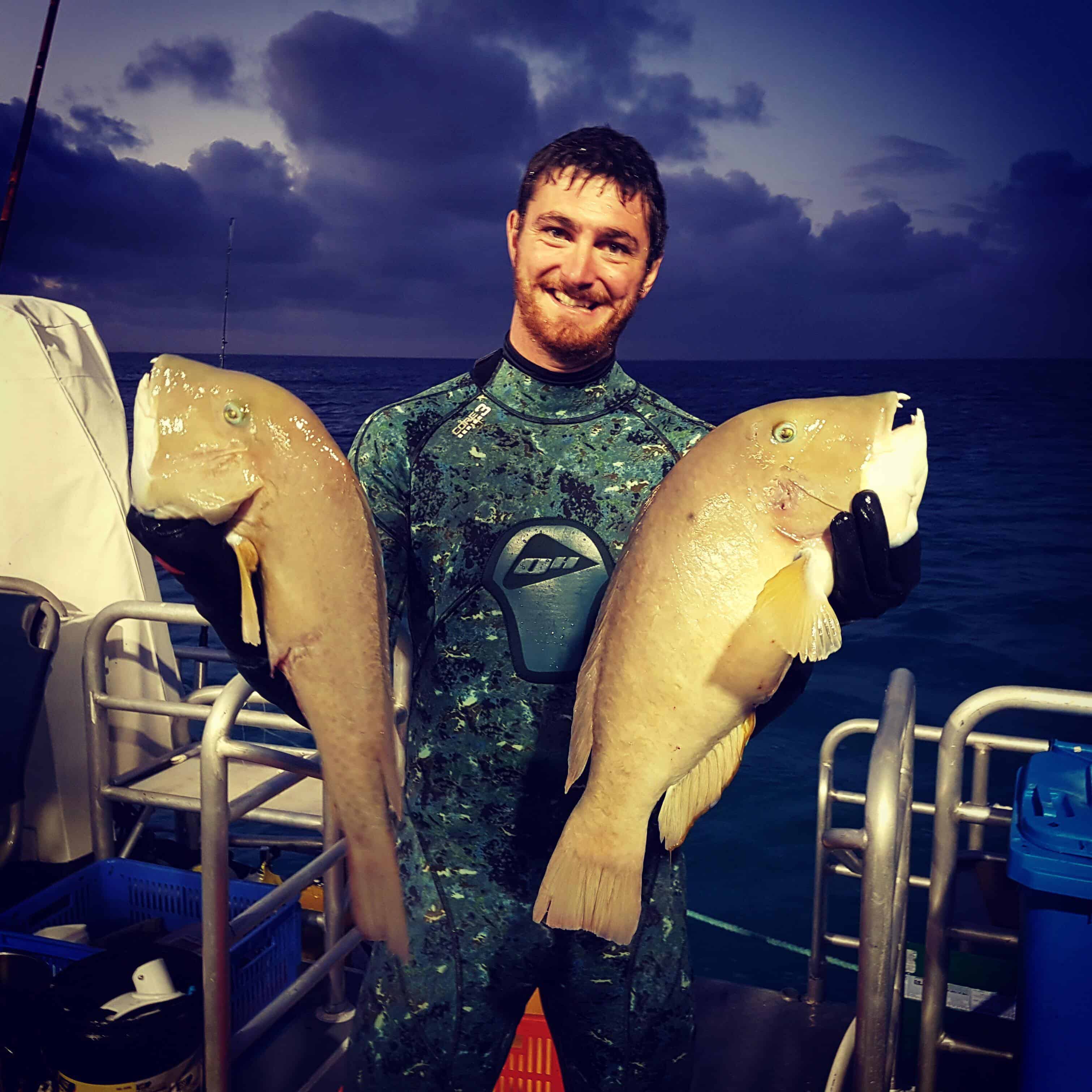
2. Bycatch. There is None!
Bycatch is a huge issue that modern fishing regulations haven’t found a way to solve. Commercial or recreational fishing, either side of the argument, they both haul up thousands of tonnes of bycatch a year. With their fishing methods, it in inevitable.
Trawlers drag in entire schools of “the wrong fish” species and throw them all back, most of which die in the process. Sometimes they’re “the wrong fish” because they aren’t a tasty species, sometimes the boat doesn’t own quota for the species, sometimes the price just “isn’t worth” bringing them in, so they’re dumped.
Recreational fishers regularly haul up fish that are, too small, not tasty, or even over the species bag limit so they throw them back and try for something else. Now some of these fish do survive, however due to injured mouths or conditions like barotrauma, MANY do not. Take the West Australian Dhufish for example; these fish are found at depths of 10-50 metres. When bottom fish are hauled up from that sort of depth, their eyes often pop out and their stomachs burst as the air inside expands.
How can we avoid this issue of bycatch? Spearfishing! It is the only true way to ensure your fish is fresh, tasty, in season AND of legal size before you harm it.
Now I’m not saying I don’t enjoy a good day out with the rod and reel, of course I do. I always stick to the bag / size limits and do my best to do the right thing. However I far prefer to spot my fish on the bottom before I pull the trigger.
3. Visit untouched nature and meet the friendly creatures of the deep.
There is a whole world under the surface that most humans have no idea exists! How crazy is that right? Aside from chasing dinner, there are endless caves and swim throughs to explore. You’ll see dolphins, turtles, and octopus in their natural habitat, going about their daily business.
On a recent dive I was following a fish through a cutting, he disappeared on me round a corner. As I reached the corner, a small reef shark darted out from below me, then I noticed a large turtle swimming towards me, thirdly I felt a shadow pass over me… nervously I looked up, only to see a giant manta ray gliding right over top of me, literally only a metre above! An ocean trifecta that truly blew me away! It was such a surreal experience that I forgot all about the struggle of the breath hold.
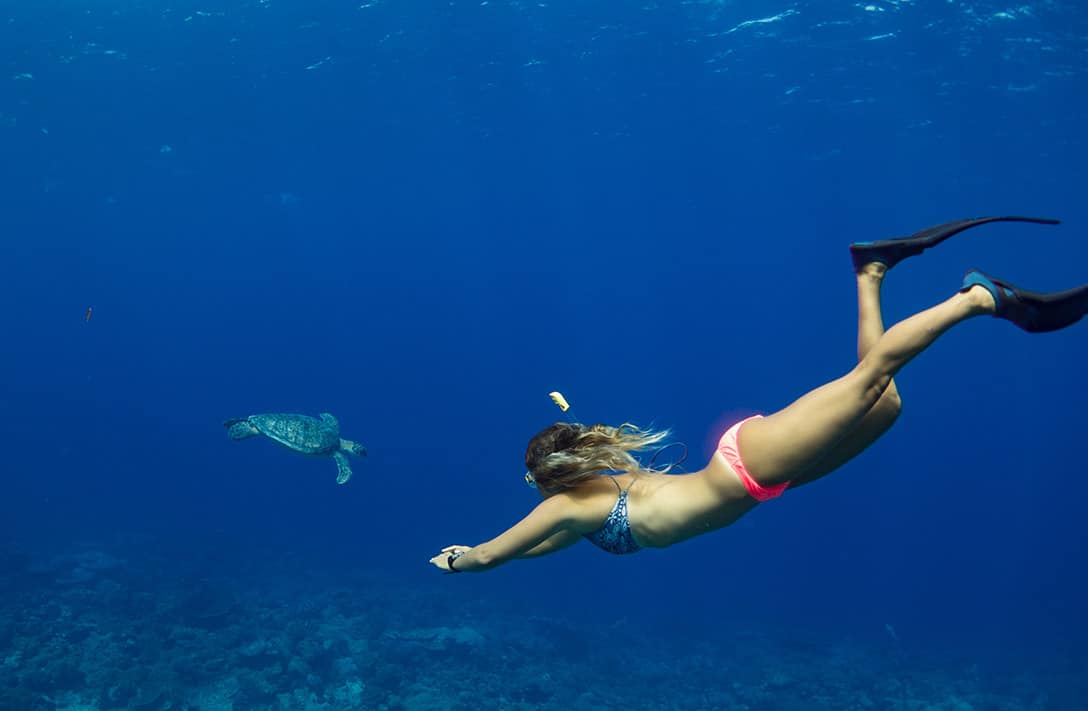
4. Exercise and adventure.
One thing that I truly appreciate after a day in the water, is sleep. Whether or not you bring home dinner, see amazing creatures or none of the above, diving is a fantastic work out. Sometimes, when you’ve been in the water too long and you’re getting cramp, it can be a battle of determination just to climb the ladder back into the boat, or up the rocks to shore.
The adventure, the thrill of the chase and the serenity of it all make you forget that you are actually in the middle of a full blown workout. It’s cardio without realising you’re doing cardio. I’m sure no one would complain about that!
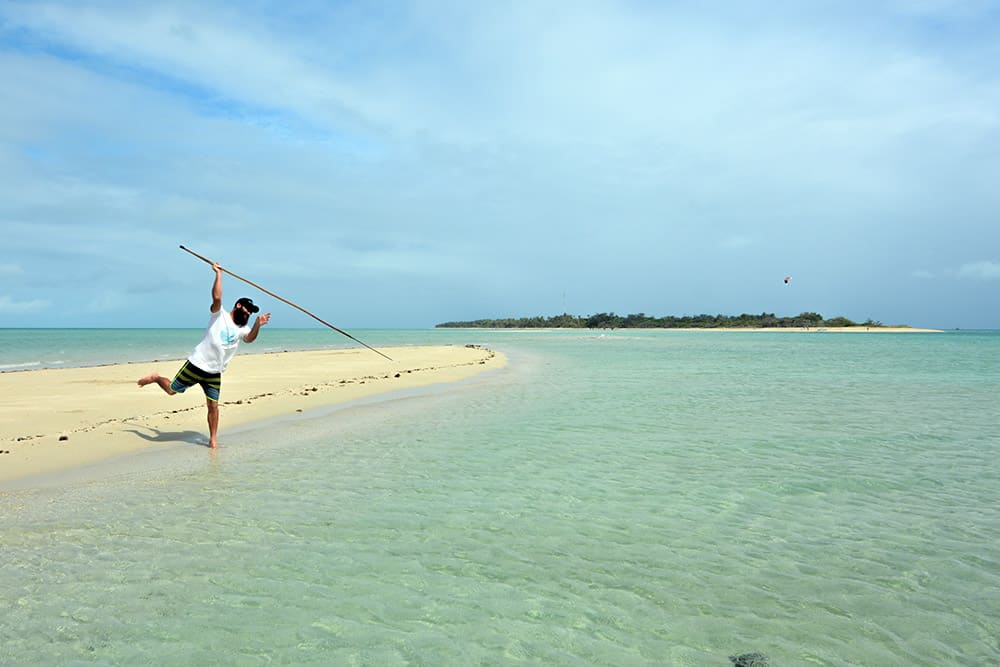
5. An instinctive form of meditation and mindfulness
Now whether or not you’re into meditation is irrelevant. Studies have proven the effectiveness of meditation and mindfulness practices at reducing stress and improving focus. Like the exercise, this one happens without you even knowing it. Diving is all about breath control, mental stamina and relaxation.
Every moment you are in the water you are consciously aware of your breath. In mindfulness the breath is one of the major ‘anchors’ to the present moment. This means we use the breath to help us focus on this exact moment in time. No worrying about what Jo at the office said yesterday. No planning dinner tonight or accommodation for the trip next weekend. No stressing about the week ahead or the car payments you’re behind on. Only this moment right here matters.
To help control the breath you are forced to learn to relax. If you are struggling physically, or stressing about things that aren’t present, your heart rate goes up, causing you to suck more air. This is counter-productive to your freediving breath hold. So, you learn to relax, a “skill” that many of us have lost with our modern day lives.
6. Face your fears and feel alive!
Yes there are sharks in the ocean. But if you live in australia there’s probably snakes in your garden. Or even worse, poisonous spiders in your couch… as we recently found out when shifting house.
Believe it or not, it really is a good thing to face your fears. The modern day consumer is a scared shaken mess. We’re trained to buy insurance incase our house is robbed or a hit by a natural disaster. We’re groomed to buy the ‘Fancy’ loaf of bread incase the other school moms think we are too poor not too. Many people would love to start a business, but are too scared of failure to take the leap.
Conquering your fears, physical or emotional, is unbelievably liberating. Once you conquer one, you just might find yourself chasing down the others.
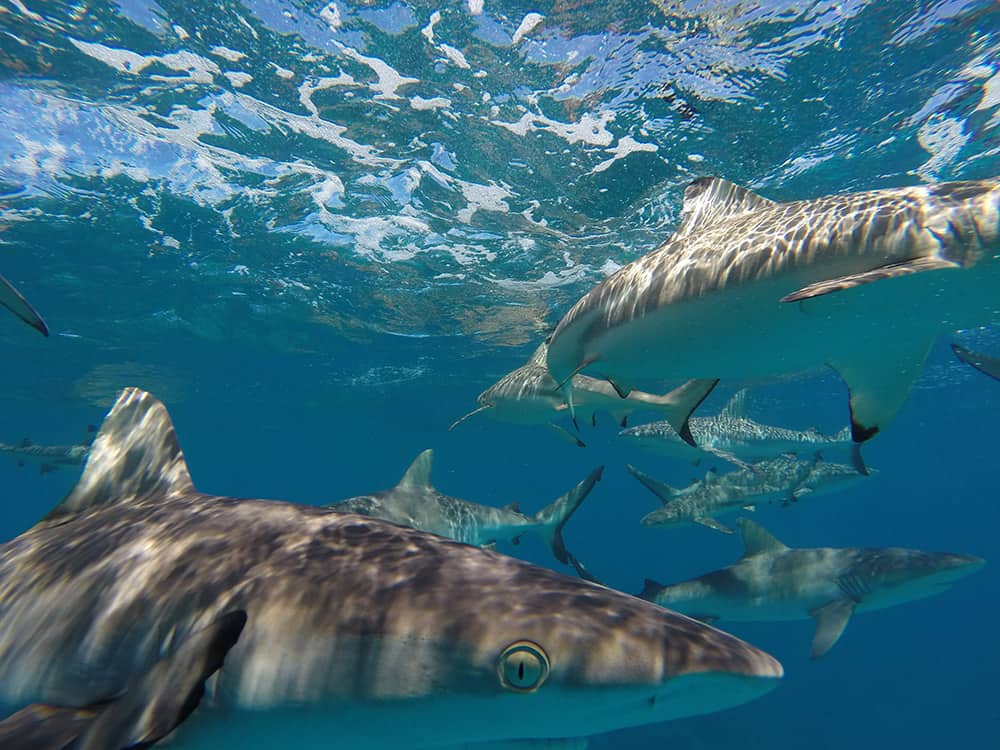
7. Educate your children (or someone else’s).
When you dive and spearfish, people love to hear the stories (and if they don’t, you’ll inevitably tell them anyway…). Stories about your deepest dives, colossal catches and man eating sharks you fought off. But this story telling is also a fantastic opportunity to educate those around you, particularly children, about the futile health of our beautiful oceans.
They say that by 2050 there will be more plastic than fish in the ocean (by weight). Now there are two equally scary forces working here. Overfishing across the globe is stripping many fish stocks bare, note particular reference to bycatch above. In Australia and New Zealand we have strict fishing regulations and quotas to protect our waters and the fish in them. Many other countries however do not. The other factor is the horrific amount of plastic being produced across the world on a daily basis, much of it single use. Now not only does plastic take many many years to break down, it’s actually the smaller “broken down” plastic that is more harmful to sea life. You see, plastic doesn’t actually bio degrade at all, it just gets smaller. These tiny bits of plastic are mistaken by fish and other creatures as food. There are countless videos now of fish and seabird guts being opened to reveal a handful of plastic rubbish.
Other issues include the likes of reef damage from dredging and phosphate runoff from fertilizers in high intensity farming areas.
Once you become hooked on diving, you become more consciously aware of the damage mankind is doing, and you begin to care more. When you care more, you talk, when you talk you educate. Educating kids is a great way to ensure the next generation is far more earth conscious than our generation or those before.
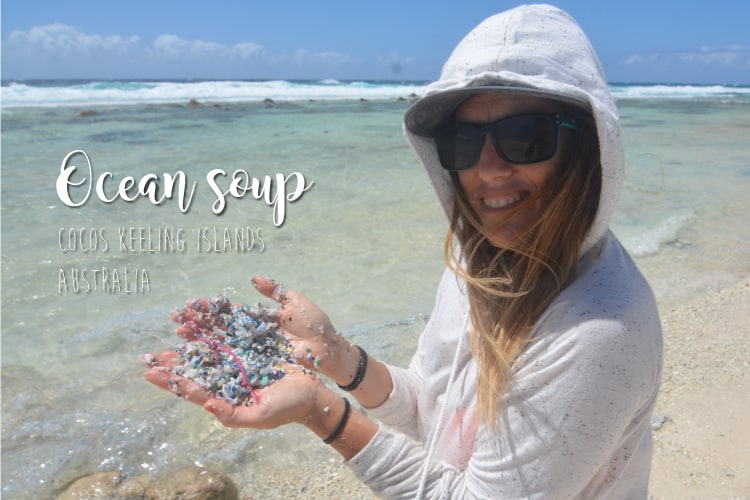
SO, who would’ve thought, there’s more to spearfishing than just filling the belly and the freezer. If you’ve never tried it, get out there and give it a go! If you’ve never spent much time in the ocean, doing a scuba diving course is a fantastic place to start. Although I preach freediving, scuba is a great way to get the basic principles of diving, which will make it a whole lot easier when you’re ready to ditch the tanks. It will also give you a glimpse of the underwater world without the struggle, this way you’ll be hooked before you know it!
Thanks to TJ for providing this awesome blog about spearfishing. TJ is our resident host and fisherman on the Cocos Islands kite tours this winter and is the Director of Two Fins Apparel, a simple clothing label who’s dedicated to protecting our oceans and keep it real!
If you already love to spearfish then check out our Torres Strait tours. Here you can spear in abundant protected waters and learn new and old methods from our local guides.

1 Comment. Leave new
Really great article! I already spearfish & think you captured the experience very well! Il be passing this link onto others. ( My only headscatcher-Wonderin why the pic of the guy on shore has an above the surface spear -very dif activity than underwater spearfishn??)